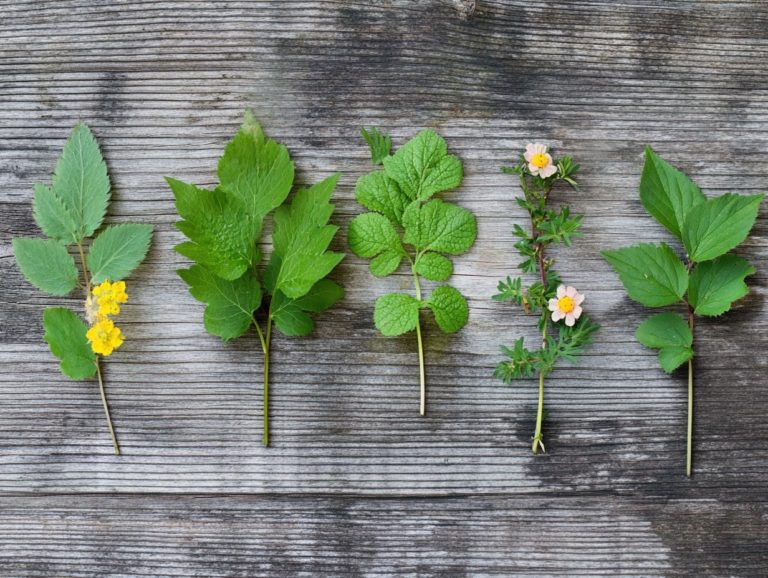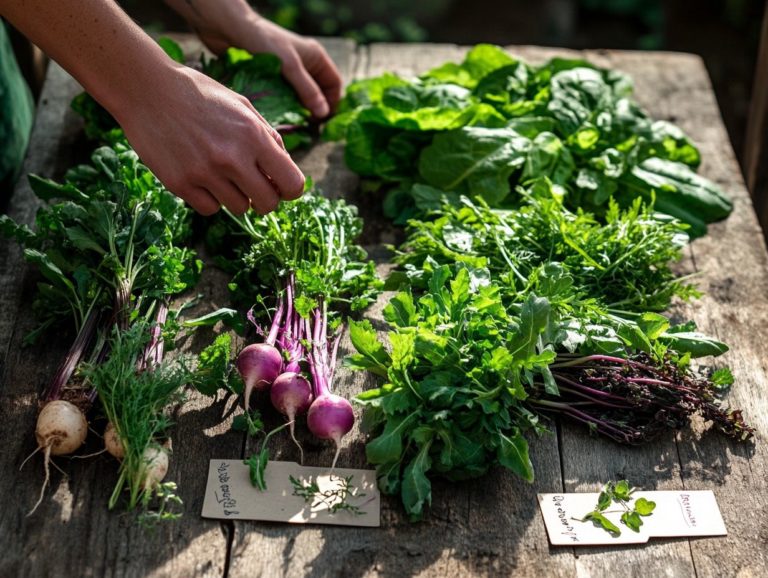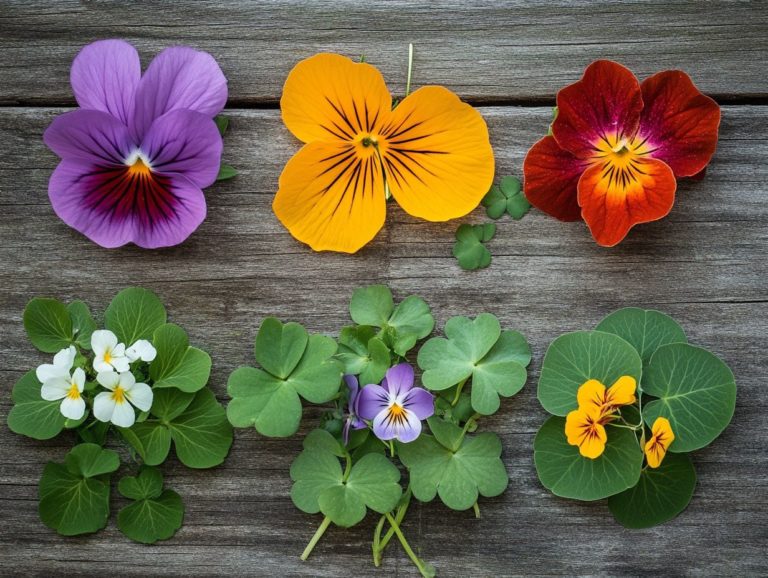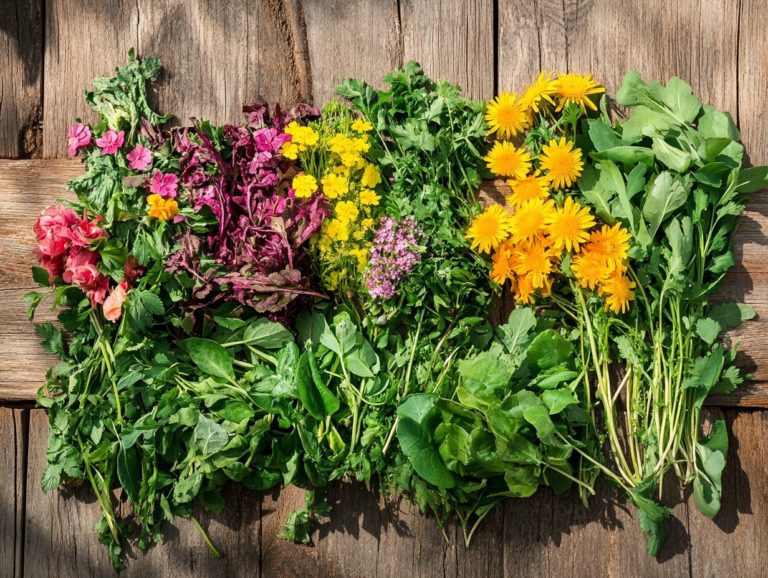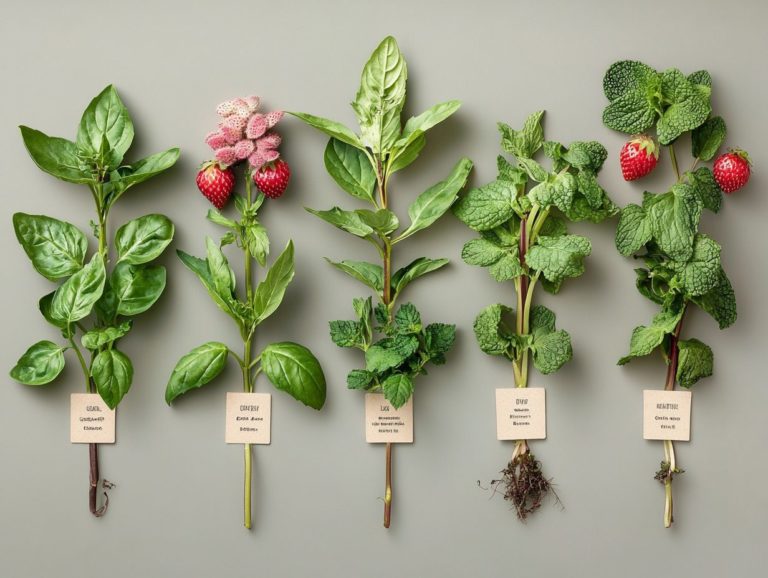5 Unique Wild Edibles You Can Find
Exploring the world of wild edibles reveals a treasure trove of flavors and nutrients just waiting for you right outside your door. Get ready for an exciting adventure in foraging that will delight your taste buds!
Consider the peppery bite of dandelion greens or the earthy richness of fiddlehead ferns. These unique plants not only elevate your cooking skills but also provide impressive health benefits.
This article will introduce you to five fascinating wild edibles, offering tips on safe identification and harvesting. You ll also learn about potential risks and discover some lesser-known gems that you might not have encountered yet.
Contents
Key Takeaways:
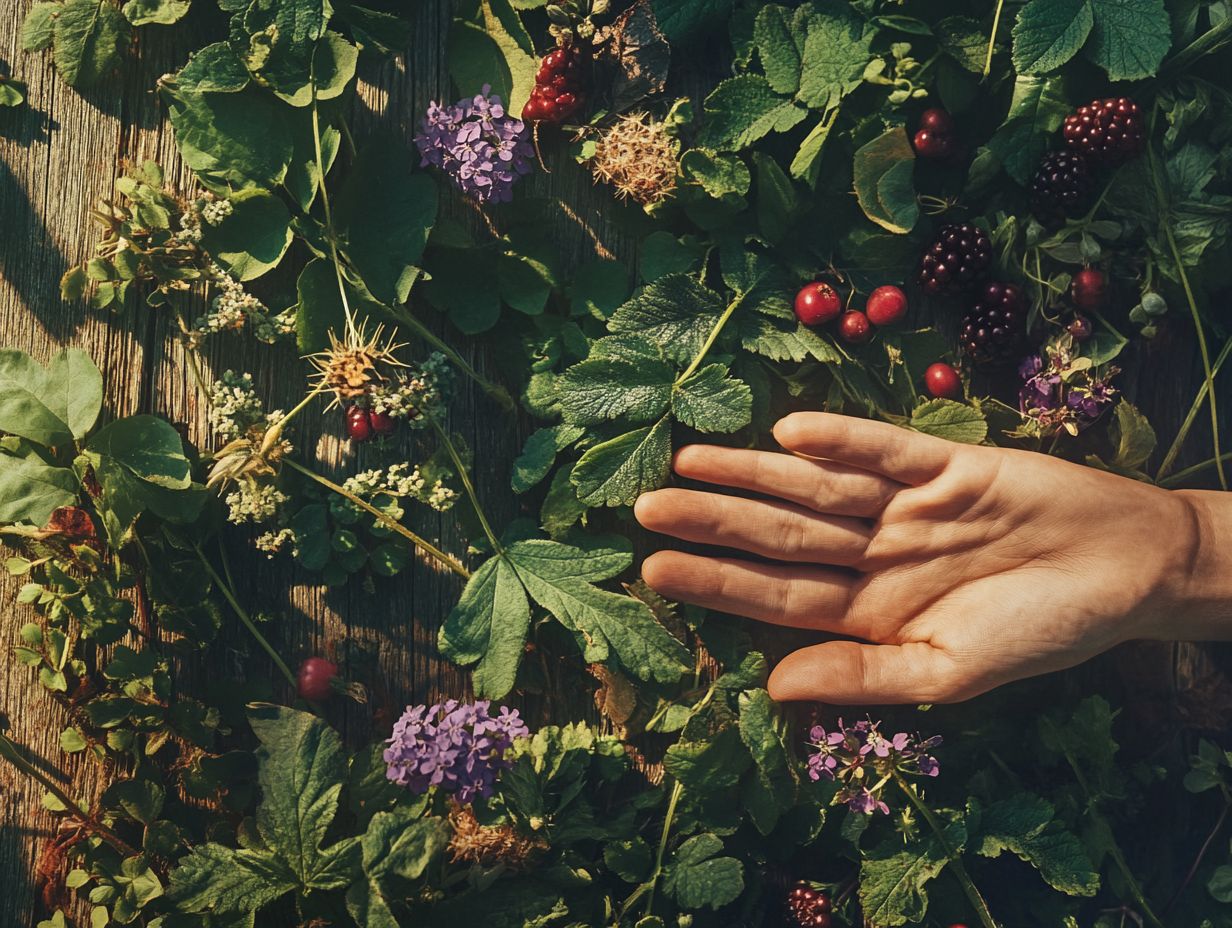
- Dandelion greens are a common and versatile wild edible, packed with nutrients. They can be used in salads, saut ed, or brewed into tea.
- Purslane, a succulent plant, is also a nutrient-rich edible that can be used in salads, soups, or stir-fries.
- Stinging nettle may seem intimidating, but it can be used in a variety of dishes and has numerous health benefits, such as reducing inflammation and boosting immunity.
1. Dandelion Greens
Dandelion greens, a popular wild edible found throughout Alabama and beyond, are not only nutritious but also incredibly versatile. They make a remarkable addition to your cooking skills, especially if you embrace sustainable foraging practices.
Packed with antioxidants and essential minerals like calcium and iron, these greens are ideal for boosting your immunity and supporting bone health. You can incorporate dandelion greens into salads, blend them into smoothies, or saut them with garlic and olive oil. Their slight bitterness can elevate a variety of dishes, adding depth and flavor.
When foraging for these vibrant greens in Alabama, look out for their distinctive jagged edges and bright yellow flowers, ensuring they haven’t been treated with pesticides. Carrying a field guide will enhance your ability to identify plants accurately, ensuring a safe and fruitful foraging adventure.
2. Purslane
Purslane, a succulent wild edible, beckons with its slightly tangy flavor and impressive healthy fats that are good for your heart. It thrives in a variety of environments, making it a truly valuable find for foragers in Alabama and its neighboring regions.
Beyond its vibrant green hue, purslane boasts a rich nutritional profile, packed with vitamins A, C, and E. Purslane is increasingly popular among chefs eager to elevate the freshness and complexity of their dishes. You ll often recognize it by its reddish stems and thick, smooth leaves, easily spotted in urban gardens, along sidewalks, or even sprouting through cracks in the pavement.
As culinary artists continue to weave purslane into salads, stir-fries, and garnishes, its popularity is on the rise. It offers a unique fusion of health benefits and versatile flavor that captivates even the most discerning food lovers.
3. Stinging Nettle
Stinging nettle is a wild edible that has been celebrated for centuries. It is renowned for its impressive health benefits and unique ability to elevate a variety of culinary creations. This makes it a coveted ingredient for both chefs and home cooks alike.
Loaded with vitamins A, C, K, and a host of B vitamins, along with essential minerals like iron, calcium, and magnesium, stinging nettle provides a remarkable nutritional boost to any meal. Its leaves are particularly rich in protein and antioxidants, contributing significantly to overall health.
If you re keen on sourcing this leafy green, remember to wear gloves during harvesting to avoid its sting, which can easily be neutralized through cooking methods like boiling or saut ing.
Historically, various Native American tribes harnessed the power of stinging nettle not only for food but also for its medicinal properties, recognizing its potent qualities for healing and nourishment.
Join the wild edible movement and discover the flavors waiting for you outside your door!
4. Wild Garlic
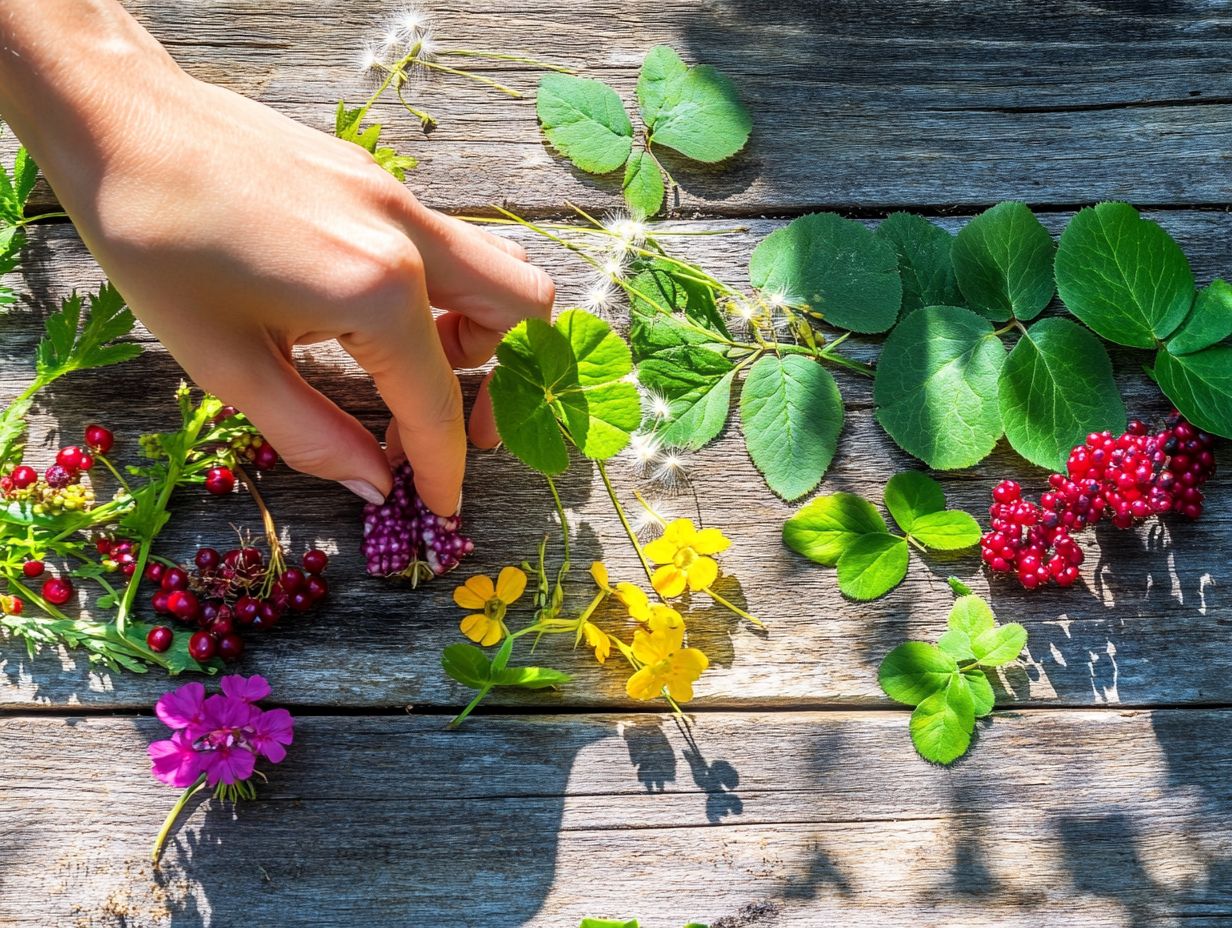
Wild garlic is a fragrant herb that elevates the flavor profile of dishes, making it an exciting find for anyone foraging through Alabama’s rich landscape. You can easily identify it by its distinctive aroma and appearance.
Renowned for its versatility, this herb can brighten everything from soups and pestos to marinades. With its mild, garlicky taste, wild garlic offers numerous health benefits, including antioxidants and anti-inflammatory properties.
To spot wild garlic, experienced foragers recommend looking for its broad, green leaves that emerge from the ground, accompanied by a strong, garlicky scent especially in damp woodland areas during spring.
Chefs can’t stop talking about wild garlic! One enthusiast notes how its bright flavor can transform a simple risotto into a standout dish, proving that humble ingredients can shine when treated with care.
5. Fiddlehead Ferns
Fiddlehead ferns are charming young coiled shoots from certain fern species and are a tasty food cherished by foragers and chefs alike. Their unique flavor and tender texture make them a prized ingredient for sustainable cooking.
These vibrant greens offer a taste profile reminiscent of asparagus, complemented by a subtle nuttiness. They are packed with antioxidants, vitamins A and C, and dietary fiber, making them an excellent choice for health-conscious individuals.
Proper identification is key; only specific species, such as the ostrich fern, are safe to consume. It s wise to exercise caution and avoid any toxic variants. During harvesting, remember to take only a portion of the shoots to ensure the population can flourish for seasons to come.
Their rising popularity in modern kitchens signals renewed interest in wild foraging and local sourcing. Chefs are inspired to feature them prominently in seasonal menus.
What Are Wild Edibles and How Can They Be Used?
Wild edibles encompass a fascinating array of botanicals you can forage from nature, gaining recognition for their impressive nutritional benefits and culinary potential. For those interested in exploring their use, check out 5 wild edible recipes for outdoor cooking, as they offer a sustainable alternative to conventional farming while fostering a connection to local ecosystems.
These natural ingredients infuse your dishes with unique flavors and textures, encouraging a deeper appreciation for seasonal eating. In Alabama and its surrounding regions, discover a variety of wild edibles like dandelion greens, wild garlic, and elderberries, each with distinct health benefits. Incorporating these ingredients can elevate your cooking, as seen in 5 wild edible recipes for vegan cooking.
Incorporating these foraged plants into modern cooking highlights a growing trend toward local sourcing and sustainability. Embrace responsible foraging practices to ensure these plant populations remain abundant for future generations, preserving culinary traditions and the environment.
How Can One Safely Identify and Harvest Wild Edibles?
Successfully identifying and harvesting wild edibles requires a blend of knowledge, practice, and caution. This ensures you can safely enjoy the rich bounty of nature without risking your health or the environment.
Keen observation of key characteristics like leaf shape, flower color, and growth patterns is essential, as these can help you distinguish safe from harmful plants. Pay attention to the habitat where each plant grows, as this provides valuable clues about its identity and edibility.
Consulting reliable resources, such as field guides or local experts, can deepen your understanding and build confidence in foraging choices. Practicing sustainable harvesting methods like taking only what you need protects wild edible populations for future generations, allowing others to share in the joy of foraging.
Get out there and discover the delicious world of wild edibles today!
Curious About Wild Edibles?
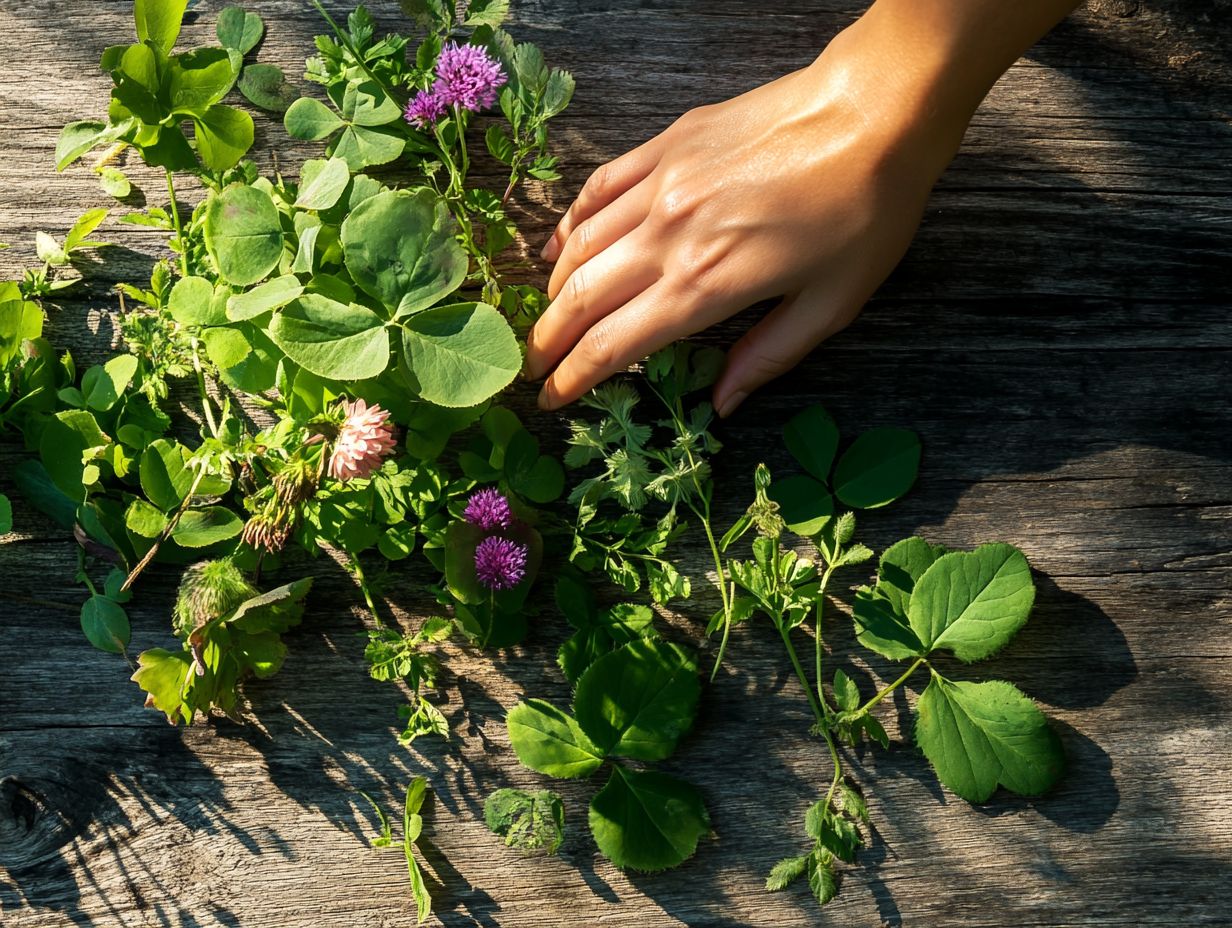
Consuming wild edibles presents numerous nutritional benefits! They can enhance your immunity with their rich vitamin content. Plus, they introduce unique flavors that improve your cooking skills. Check out 5 ways to include wild edibles in your baking; these plants are a valuable addition to any diet focused on health and sustainability.
Wild edibles often have high levels of vitamin C, essential for skin health and immune support. They also contain crucial minerals like iron and magnesium, contributing to overall well-being. Ingredients like nettles and dandelion greens are celebrated for their detoxifying properties helping to cleanse your body of toxins.
Chefs around the world are embracing these unique ingredients. They integrate their distinct tastes into innovative dishes that honor both nutrition and environmental consciousness. This movement fosters a more sustainable way of eating and enlightens diners about the remarkable treasures nature has to offer.
How Can Wild Edibles Be Incorporated into Everyday Cooking?
Wondering how to include wild edibles in your daily cooking? Incorporating them enhances flavors and supports sustainable food practices. Check out these 5 wild edible snacks for your next hike to celebrate the diverse flora of your region while crafting healthful meals!
By foraging for local greens, mushrooms, and flowers, you can unlock a treasure trove of unique flavors and textures. For instance, try adding dandelion greens to a classic salad for a peppery kick. You might also explore 5 wild plants to forage this winter—a dash of wild garlic can elevate a simple soup with a burst of freshness!
Renowned chefs often champion these ingredients, experimenting with traditional dishes. They create innovative meals that reflect the essence of place and season. Techniques like drying, pickling, and saut ing transform these wild finds into delightful components that nourish the body and ignite your creativity in the kitchen.
What Are the Potential Risks of Consuming Wild Edibles?
While wild edibles can provide exceptional health benefits, it’s crucial to recognize the potential risks. Misidentification and environmental contaminants are key concerns every forager should consider. For those interested in safe foraging practices, exploring winter foraging: 5 edibles to keep you nourished can enhance your knowledge and ensure a safe experience.
You might encounter toxic species that look similar to edible plants, which can lead to serious health issues. Some individuals may also have allergic reactions to specific plants. Environmental factors, such as pollution or pesticide use, can complicate matters further, as contaminated plants pose additional health threats.
To mitigate these risks, thorough research and careful plant identification are essential before harvesting. Always consult reliable guides and local experts. If you re ever in doubt, it s best to err on the side of caution and avoid consuming any questionable species.
What Are Some Lesser-Known Wild Edibles That Can Be Found?
Exploring lesser-known wild edibles can truly elevate your culinary adventures! Discover 5 wild edible ingredients for comfort food that offer a rich tapestry of flavors often overlooked in traditional cooking.
Take wild garlic, for example. Its delicate, mild onion-like flavor can transform salads and pestos into something extraordinary. Then there s lamb’s quarters, which has nutty notes that work beautifully in saut s or grain bowls. Don t underestimate purslane; often dismissed as a mere weed, it surprises with its succulent texture and slightly tangy taste, all while being packed with omega-3 fatty acids and antioxidants.
As you stroll through local parks or fields, keep your eyes peeled for these hidden gems! Before you start harvesting, research proper foraging techniques and accurately identify the plants.
Imagine using these wild ingredients in your next meal! Blend lamb’s quarters into a creamy dip or toss purslane into a fresh summer salad for a delightful zing of the unexpected.
Frequently Asked Questions
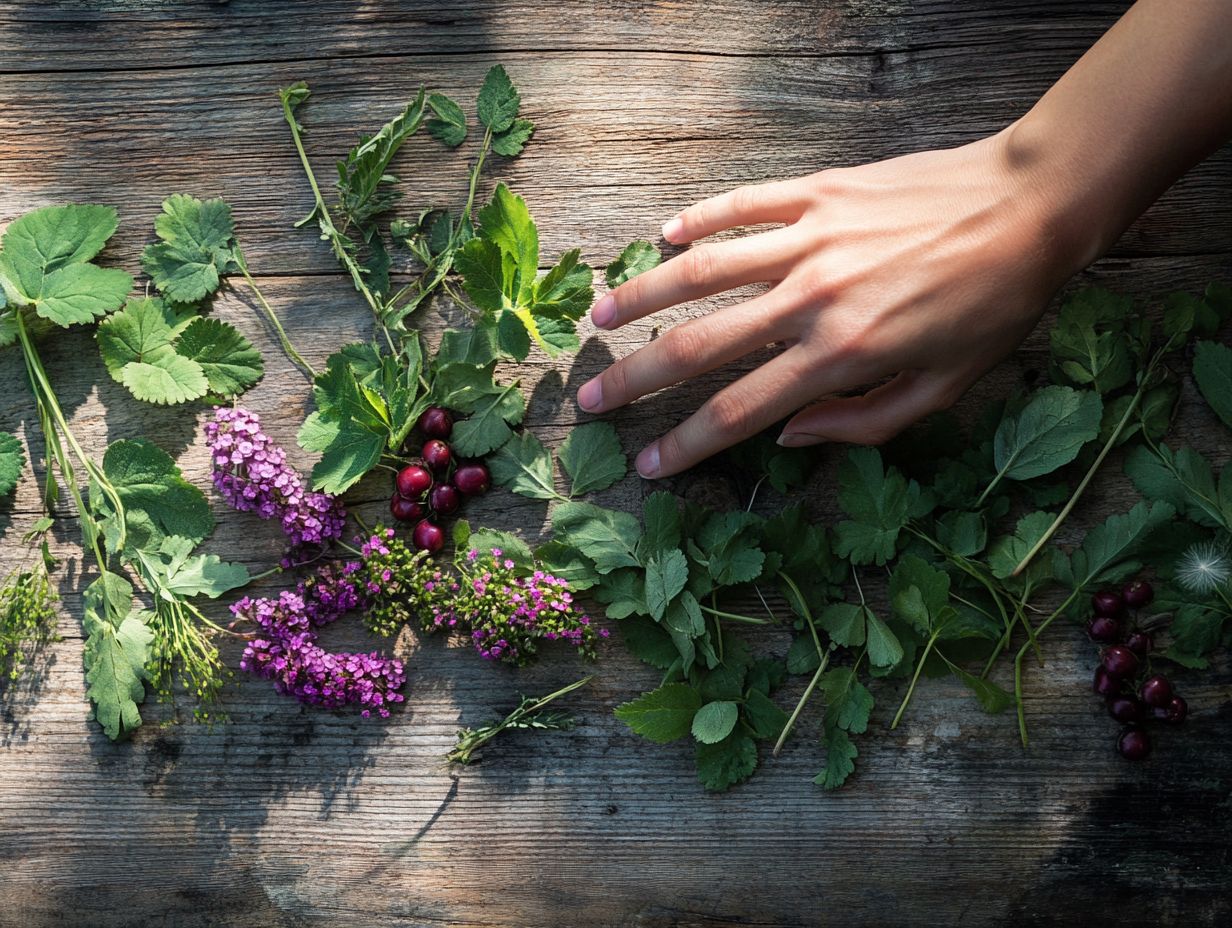
Have questions about wild edibles? Here are some common queries!
What are wild edibles? Wild edibles are plants that grow naturally and are safe for human consumption.
Can I eat all wild plants? No, not all wild plants are safe to eat. Always identify plants correctly and research their edibility.
How do I start foraging? Start by learning about local wild plants through books or by joining foraging groups.
Try exploring wild edibles in your own cooking adventures!
What are 5 unique wild edibles I can find?
Discover these tasty treats while they’re in season! Some unique wild edibles you can find include fiddlehead ferns, ramps, watercress, elderflowers, and top 5 wild edibles for beginners like milkweed pods.
Where can I find fiddlehead ferns?
Fiddlehead ferns are young fern fronds that look like curled-up spirals. They thrive in shady, damp spots.
Keep an eye out along riverbanks, near streams, and in the woods!
What are ramps and where can I find them?
Ramps, also known as wild leeks, are a type of wild onion. They are commonly found in wooded areas, especially in the eastern United States and Canada.
What is watercress and where is it usually found?
Watercress is a leafy green plant that grows in or near bodies of water. You can typically find it in streams, springs, and ponds.
What edible plant can be made from elderflowers?
You can make elderflower syrup, tea, and jelly from elderflowers. These delightful products add a unique flavor to your dishes!
Can milkweed pods be eaten?
Absolutely! Young, tender milkweed pods are delicious and can spice up your meals.
Try cooking them in stir-fries or soups for a tasty addition!

